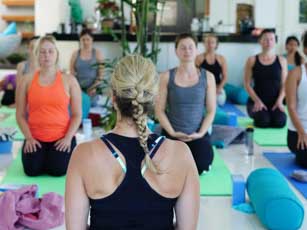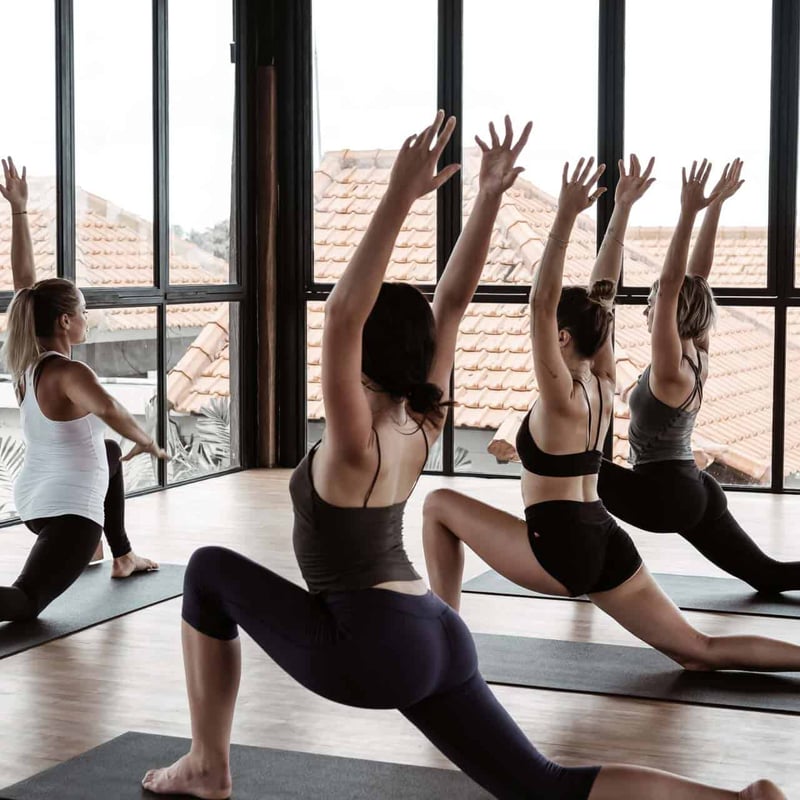Last updated on January 28th, 2023 at 02:59 pm
7 Tips to be a Better Yoga Teacher!
Over the past 20 years as an avid yoga practitioner and student in several countries and of almost every style of yoga, and the past decade as a yoga teacher and a yoga teacher trainer, there have been some extremely valuable lessons and observations I have made of teachers and guidance of yoga and meditation.
Throughout our 200 hour Yoga Teacher Training courses at Loka Yoga School, students often discuss these key topics.
And yet, on a consistent basis I am experiencing, and feeling that it is becoming more and more apparent, that many teachers do not receive feedback from their students.
Constructive feedback is not so easy for a student to give their teacher. They often feel unqualified to do so! However, if you truly value your role as a yoga teacher I highly recommend requesting constructive feedback from your students, allowing yourself an opportunity to evolve and become a better yoga teacher!
Here are a few tips to consider…
1. Observation
I cannot count how many times I have been in a class where I feel the teacher is trying to squish in their own practice whilst teaching and are barely even looking at their students! Some have even closed their eyes in poses. What is that?!? The only time a teacher should close their eyes is during Meditation or perhaps Savasana, holding space for their students.
Constant observation of the students allows a teacher to offer beneficial cues, verbal corrections, understand each person’s level and requirements and – super importantly – safety!
You have a duty of care, as a yoga teacher. Looking at everyone will create a safe space and energy, allow your students to feel seen and hold space for them.
Look at your students!! Eventually with time and experience, you will gain more and more confidence to leave the mat and won’t need to demonstrate so much.
Remember: teaching yoga is not simply a ‘monkey see, monkey do’ activity and your instructions and guidance should be based on what you see. Which brings me to the next tip…
2. Instructions/ Cues
The more clear and succinct your instructions are, the safer and more enjoyable the practice will be for your students. Ensure your voice can be heard at the back of the room and that you are projecting your voice.
Ideally, your instructions should be so clear that your students could enjoy your class with their eyes closed!
As with the first tip in Observation, clear and concise cues help to create and hold space. And again, over time and with experience you will be able to offer such perfect instruction that you will not be required to demonstrate on your mat so frequently.
Cue to your audience. Walk around the room observing, correcting and adjusting your students whilst guiding the practice. You will soon understand how thorough your cues need to be.
Obviously when teaching beginners, your instructions must be extremely in-depth and thorough and you will possibly need to demonstrate more often too.
If teaching more experienced students, guide them through the benefits, the breath and offer yoga philosophy for each of the poses whilst you offer adjustments…your students will love you sharing your knowledge of yoga and inviting a deeper experience!
3. Be still
There is nothing more annoying than when you’re trying to relax in Savasana and a teacher is pacing up and down the room. Unless you are smudging the space with sage, incense or palo santo OR giving adjustments, sit quietly at the front of the class on your mat and be still. Hold space.
Moving around in front of your students whilst guiding them through standing balancing poses is also rather irritating and unnecessary. Stand to the side if you wish to adjust students, but avoid walking in front of them. Ever had someone in your face when you’re trying to take your Natrajasana (Dancers Pose) to the next level? Not fun. Allow them to find their drishti and maintain concentration.
The same advice applies when you are guiding Meditation or Yoga Nidra. Moving around the room is an unnecessary distraction and disturbance that you students will not appreciate.
And if you must walk…
4. Master the art of walking softly
During our 200 hour YTT we actually teach the art of walking softly and include this in one of our workshops, because I personally believe it is an important quality of teaching!
Generally speaking, thumping your feet around in a yoga shala is not what we mean when we refer to a teacher “having a strong presence”! But jokes aside, many yoga teachers are actually not even aware of how loud they walk. Are you?
If you are teaching in a studio that has a wooden floor, you can be assured that every footstep can be heard by your students whenever they’re in any pose on the floor (especially Savasana).
So how do you walk softly? Tiptoeing helps, however many find this to be a little challenging for balance and a workout on the calf muscles and achilles tendon! Another option is to walk with your feet slightly supinated, ensuring the outer edges of your feet come in to contact with the ground first, then slowly and gently allow your foot to roll down onto the ground. From the outside of the foot to the inside, rather than from the heel to the toe. Go on, try it!
5. Forbid the Phone!
6. Turn off the music!
Wait! Hear me out on this before all of you Power and Vinyasa yogis think I’ve gone crazy. I love music too but…
I am specifically referring to the opening and closing of a class!
Music can be rather off-putting or influential of thoughts for students when they are setting an intention or affirmation. It also dramatically interferes with the frequency and vibration when chanting ‘Om’. I always recommending turning the music off during the opening and closing points of the practice for this reason.
Silence is bliss, get comfortable in allowing space for silence!






